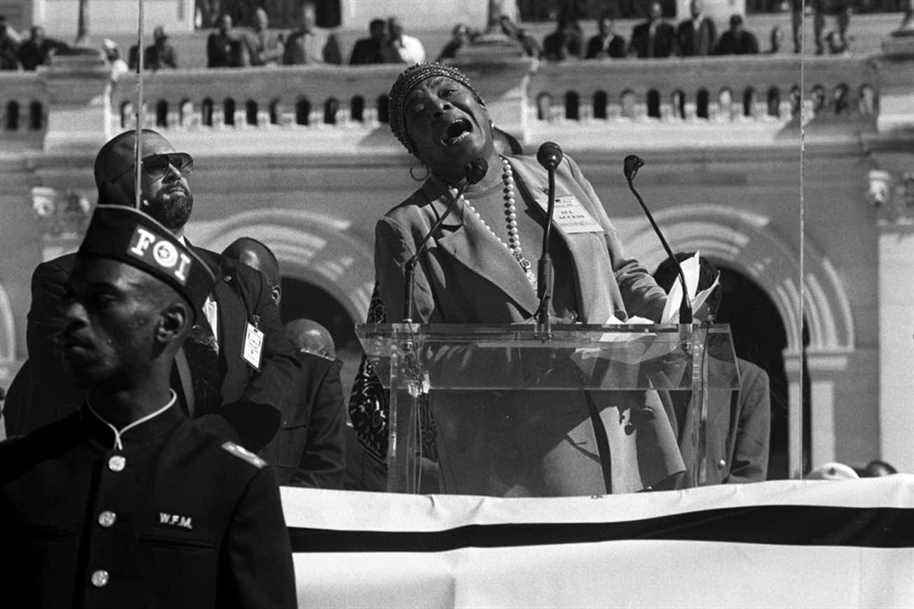This year, the United States Mint decided that Maya Angelou would be the first black woman to appear on a coin. In this Black History Month, it is important to pay tribute to this phenomenal woman1 Maya Angelou, embodiment of the resilience of black women, as well as Viola Desmond, a Canadian who fought against racial injustice and made her voice heard. These women remind us that the struggle for social justice is as long as it is winding.
Posted at 11:00 a.m.
How to speak of Maya Angelou, this multi-faceted woman who has transcended many tragedies by embracing life head-on? She has been a dancer, actress, singer, writer, editor and scholar. An activist in the civil rights movement, she cooperated with Martin Luther King in the Southern Christian Leadership Conference.
Maya Angelou, this force of nature knew how to alchemize the trials. She was raped at the age of 7 by her mother’s spouse who was murdered when she left prison. For six years, convinced that it was her denunciation that led to the murder of her stepfather, she immured herself in absolute silence.
This episode did not prevent her from becoming a world-renowned writer and poet. Maya Angelou said, “We may encounter many defeats, but we must not be defeated. »
In his most famous poem, Still I Rise (Yet I rise)2, she transmits her strength to us: “You can bring me down with your words, / Cut me with your eyes, / Kill me with all your hatred, / But like the air, I rise again. Or You can put me down for History / With your bitter and twisted lies, / You can drag me through the mud / But like dust I rise again. »
As the first black monetary effigy, it still rises!
Canadian currency
In 2018, Viola Desmond became the first black woman to appear on Canadian currency.
Born in 1914, in Halifax, Viola Desmond dreamed of opening a beauty salon when beauty schools did not accept black women. Instead of giving up on her dream, she trained as a hairdresser and beautician both in Montreal and in the United States. Innovative, she was one of the first to create a range of cosmetics for black women.

CANADA POST PHOTO
Viola Desmond stamp
In November 1946, having become the owner of her institute and operating a beauty school, Viola Desmond made a business trip to New Glasgow. It was then that she had problems with her car. While she was waiting for it to be repaired, she decides to go to the cinema. She settles down on the floor, access to which is forbidden to blacks, which she did not know. The staff asks him to go and sit on the balcony.
Viola Desmond will be arrested and dragged out of the cinema. Since she hadn’t paid the penny tax for the pit ticket. She was charged with tax evasion, a charge she contested in court.
It is therefore for a penny that a legal battle has begun. Viola will come out the loser, but in challenging this accusation, she opposed both racial injustice and segregation in Canada.
By mobilizing the black community of Nova Scotia, she galvanized the civil rights movement in Canada with remarkable courage. This fight, she paid an immeasurable price: a divorce as well as the loss of her business.
The segregation of spaces was actively practiced. Although unofficial, segregation had been adopted by shops, theaters and restaurants. In Montreal, blacks had been denied such access, both to the cinema and to the liquor store.
The prohibitions that existed at the time of segregation have moved places, spaces. However, it cannot be ignored that neighborhoods, schools, workplaces, public spaces and certain professions remain predominantly white. These white spaces, white spaces, are implicitly “forbidden” to black men and women or they are not welcome there. Spaces where they are only tolerated on condition of compliance.
Racism at the United States Mint
On January 21, the New York Timesin the article “Racial Turmoil Mars Signs of Progress at the US Mint”, will ironically remind us that the struggles are not over.
The unveiling of this tribute coin to Maya Angelou coincides with the appointment of the first black woman to head the United States Mint.

PHOTO BURWELL AND BURWELL PHOTOGRAPHY, ASSOCIATED PRESS ARCHIVES
Tribute piece to Maya Angelou
Remember that as early as 2017 questions about a racist culture were publicly raised. A survey of New York Times revealed that, according to a report, the workplace of the United States Mint was plagued by implicit prejudice, racial discrimination as well as microaggressions against black people.
The report points out that “black employees feel threatened, marginalized and professionally disadvantaged”. It also points to outdated policies, the presence of clans, nepotism and ambiguous promotion practices.
Hiding Systemic Racism Issues
The instrumentalization of black people through symbolic appointments in the promotion process in order to camouflage the problems of sexism and systemic racism, a form of tokenism, is the subject of the report’s findings.
In interviews, executives mentioned that “if we put a member of a minority as deputy director of the US currency, minorities will see that we are neither racist nor sexist.”
This is not unlike the case where women, blacks are promoted to leadership positions during times of crisis (the phenomenon of glass cliffor glass cliff).
To make Black Lives Matter, this type of instrumentalization must be avoided. The time has come to make real social changes so that those who are discriminated against do not have to bear the brunt of the challenges inherent in any change.

